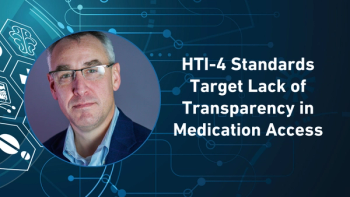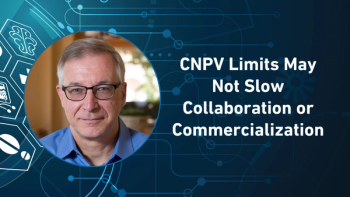
A Harvard Dean’s Blueprint for Fortune 500 C-Suites to Magnify Their Growth Opportunities
Dr. Frank Doyle, Dean of the Paulson School of Engineering and Applied Sciences at Harvard University, outlines his recommendations for Fortune 500 c-suites as they strive to attract, develop, and retain the best talent for their upcoming 2023 strategic plans.
In this installment of Michael Wong’s Harvard Business School Healthcare Alumni Association (HBSHAA) Q&A series, Dr. Frank Doyle, Dean of the Paulson School of Engineering and Applied Sciences at Harvard University, outlines his recommendations for Fortune 500 c-suites as they strive to attract, develop, and retain the best talent for their upcoming 2023 strategic plans.
Michael Wong: Since 2018, when you were interviewed for an HBS Healthcare Alumni Association roundtable,1 Harvard’s School of Engineering and Applied Sciences (SEAS) has developed an innovation blueprint for creating start-ups.2 With SEAS having only 5% of the entire university’s faculty, how did you build an operating model that has produced 40% of the start-ups coming out of Harvard?
Dr. Frank Doyle: When Harvard is mentioned in a conversation, some readers might automatically think about the school in terms of its liberal arts or business school offerings. So, they are surprised when they learn Harvard has engineering and applied sciences’ roots which date back to 1847. While SEAS is the youngest of Harvard’s schools since our formal establishment as a school in 2007, our operating model has been built upon the school’s long-term credo to educate individuals who have the ability to collaborate productively for the creation of solutions that solve humanity’s most complex problems. To build a collaborative culture, we have never had departments at SEAS. This organizational design has been the secret sauce to enable entrepreneurially minded individuals to become one team with a laser focus on converting ideas into commercially sustainable solutions.
For instance, you have SEAS stakeholders like Prof. Conor Walsh (founder of the Harvard Biodesign Lab), who brings together researchers from the engineering, industrial design, apparel, and business communities to develop and translate new disruptive robotic technologies for augmenting and restoring human performance. When prospective students see how leaders like Conor have been able to make available their ideas, like their soft exosuit technology, in clinics; many enter into the pipeline of future innovators.
With then Harvard President, Drew Faust, leading a “One Harvard” campaign,3 such an aligned strategy positioned SEAS for the sustainable success that we see today. During the last decade, SEAS graduates grew over three-fold and undergraduates majoring in engineering, computer science, or applied mathematics increased from 6% to over 21% of Harvard College students.
Speaking of building talent pipelines, what recommendations do you have for Fortune 500 c-suites as they strive to attract, develop, and retain the best talent for their upcoming 2023 strategic plans?
Despite the challenges that the world is going through today, I am an optimist given the convergence opportunities that abound. Here I am referring to the merging of distinct technologies, industries, or devices into a unified whole4 and for workers who can manage the complexities associated with them, there are tremendous upsides. Still, to secure and retain the best talent, here are three ideas to consider.
First, create ecosystems which prospective employees will clamor to join. For instance, Harvard’s Enterprise Research Campus will be a center for collaboration and entrepreneurship, bringing together partners from across Boston and beyond. In addition to its mix of residential and commercial spaces, and its public and community spaces, the ERC’s proximity to Harvard’s campus and Greater Boston’s robust research, education, and bio-medical ecosystem will create opportunities for intersections between academia and industry, community, health, and social impact.5
Second, create an enterprise-wide learning and development strategy that supports a culture of continuous learning and is strategically refreshed. In particular, just as start-ups often have flattened hierarchies, Fortune 500s have become more streamlined. There is a need to provide coaching to individual contributors who have no positional authority and collaborate well with others; often with similar type-A personalities. With many c-suite officers touting their internal innovative hubs, make sure you have trained employees who can truly operate in a start-up mode.
Finally, create simple scorecards that provide trusted and transparent facts which can help guide potential course corrections and reinforce the importance of talent management key performance indicators (KPIs). For instance, at SEAS we have a DE&I (diversity, equity and inclusion) strategy and provide transparent stats which have helped with our retention aspirations. It is not only good for business, but also the right thing to do for our employees.
Dr. Frank Doyle is the John A. Paulson Dean of the Paulson School of Engineering and Applied Sciences at Harvard University, where he also is the John A. & Elizabeth S. Armstrong Professor. He received a B.S.E. degree from Princeton, C.P.G.S. from Cambridge, and PhD from Caltech, all in Chemical Engineering.
Michael Wong is an emeritus board member of the Harvard Business School Healthcare Alumni Association.
Click on the links for Michael‘s interviews with Harvard Business School’s
References
2.
4. Prof. Frank Doyle: Partnerships in Engineering and Biomedicine:
6.
Newsletter
Stay ahead in the life sciences industry with Pharmaceutical Commerce, the latest news, trends, and strategies in drug distribution, commercialization, and market access.




